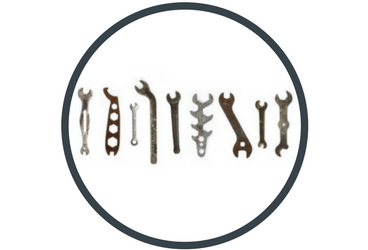
Typology: Guide to Addiction Subtypes
While a group of individuals may all be diagnosed and meet the criteria for a substance use disorder, each member of that group may experience different symptoms and patterns of substance use, and therefore present with substance use disorder differently.
Our current diagnostic systems allows for individuals to meet the threshold for a substance use disorder with many different combinations of symptoms. The variability that exists between individuals has lead researchers to develop typologies, or measures, that can be used to explain and classify addiction, given the varying presentations and variety of symptom sub-types within the disorder.
Typologies address the different pathways of origination and risk factors such as:
- Family history (genetic etiology)
- Symptom profiles
- Psychological history (psychiatric comorbidities)
- Environmental exposures
- Social context
Jellinek Typology: Subspecies of Alcoholism
- Alpha: Psychologically-driven substance use that may or may not lead to neuroadaptation
- Beta: Continuous heavy drinking resulting in physical problems
- Gamma: Classic loss of control type of symptom profile
- Delta: Inability to stop drinking; continual drinking to avoid withdrawal symptoms
- Epsilon: Binge/episodic pattern of drinking
Cloninger et al.: Type I and II
- Type I:
- Mild to severe alcohol use
- Relatively high socioeconomic status
- Maternal alcohol use
- No criminality among fathers
- More responsive to environmental influence
- Relatively mild alcohol problems
- Late age of onset (>25 years)
- Type II:
- Positive family history of alcohol use
- Severe alcohol problems
- Other drug use
- Early onset (<25 years)
Babor: Type A and B
- Type A:
- Late age of onset
- Fewer childhood behavior problems
- Less psychopathology
- Type B:
- Childhood behavior problems
- Family history of alcohol use
- Early onset of alcohol problems
- More psychopathology
- More life stress
- More chronic treatment history
Hesselbrock: 4 Subtypes of Alcoholi, Chen
- Nonproblem drinkers
- Mild alcoholics
- Persistent desire to stop using
- Tolerance
- Blackouts
- Moderate alcoholics
- Social, health, and emotional problems
- Severely affected alcoholics
- Withdrawal
- Inability to stop drinking
- Craving
- Health and emotional problems
Moss, Chen, and Yi: 5 Clusters of Alcohol Dependence
- Young adult subtype
-
- Predominantly male sample with early age of onset for alcohol dependence (mean age: 19.6 years)
- Moderate probability of alcohol dependence in first and second degree relatives
- Lower probability of other psychiatric disorders compared to other clusters
- Moderate probability of cigarette smoking and cannabis use
- Elevated probability of engaging in hazardous alcohol use and experiencing withdrawal
- Low probability of seeking help for alcohol use
- Functional subtype
-
- Older, predominantly male (60%) sample (mean age: 41 years) with older age of drinking initiation (mean age: 18.6 years) and later onset of alcohol dependence (mean age: 37 years)
- Moderate probability of alcohol dependence in first and second degree relatives
- Moderate probability of major depression and low probability of anxiety disorders
- Moderate probability of tobacco use and hazardous alcohol use
- Low probability of other substance use
- Lowest probability of legal problems and using despite consequences of use
- Lowest probability of endorsing a reduction in activities due to alcohol
- Typically drink alcohol every other day
- Typically seek help through 12-step groups or private professional treatment
- Intermediate Familial Subtype
-
- Predominantly male sample (66%) with an average age of drinking initiation at 17 years and average onset of alcohol dependence at 32 years
- High probability of alcohol dependence in first and second degree relatives
- High probability of tobacco, cannabis, and cocaine use
- High lifetime prevalence of depression, bipolar disorder, generalized anxiety disorder, and obsessive compulsive disorder
- Typically seek help through mutual help groups, detox programs, specialty treatment programs, or private professional treatment
- Young Antisocial Subtype
-
- Earliest onset of drinking (mean age: 15.5 years)
- High probability of multigenerational alcohol dependence
- High probability of major depression, bipolar disorder, social phobia, and obsessive compulsive personality disorder
- High probability of other substance use disorders
- Highest rate of treatment with private, professional healthcare providers
- Chronic Severe Subtype
-
- Early onset of drinking (mean age: 15.9 years) and later onset of alcohol dependence (mean age: 29 years)
- Highest probability of alcohol dependence in first and second degree relatives
- Highest lifetime prevalence of major depressive disorder, dysthymia, bipolar disorder, generalized anxiety disorder, social phobia, and panic disorder
- High probability of cannabis, tobacco, cocaine, and opioid use
- Highest probability for endorsement of withdrawal, persistent effort to cut down on use, drinking larger/longer amounts than intended, time spent recovering from alcohol, reduced activity due to drinking, and drinking despite associated consequences
- Lowest percentage of days abstinent
- Highest rates of mutual help attendance, specialty rehab programs, detoxification programs, and inpatient programs
- Highest rate of emergency room visits due to drinking
Most recently, typologies for pharmacogenetics have emerged.
Some individuals with certain genotypes may respond better (or worse) to certain pharmacological approaches to treating substance use disorder. For example, some studies have found that individuals with alcohol dependence who possess a certain receptor gene (OPRMI mu opioid receptor gene AS40) have a better treatment response to the medication naltrexone than those who do not possess the gene.
For another example, see Kranzler et al. 2014:



